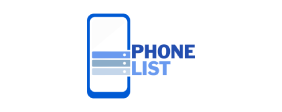In today’s interconnected world, phone numbers play a crucial role in communication. Whether it’s for personal or business purposes, knowing how to properly format a phone number is essential. A well-formatt phone number ensures that your calls and messages are deliver accurately, while also maintaining a professional appearance. In this article, we will explore the various valid phone number formats commonly used worldwide.
National Phone Number Format
The national phone number format refers to the standard format used within a specific country. It typically consists of a country code, an area South Africa phone number data code, and the subscriber number. For example, in the United States, a national phone number would have the format: +1 (XXX) XXX-XXXX. The country code (+1) denotes the United States, followed by the area code in parentheses, and the seven-digit subscriber number.
International Phone Number Format
When making or receiving international calls, it is important to use the appropriate format to ensure proper connectivity. International phone numbers include a country code, followed by the national phone number format specific to that country. For example, if calling a number in the United Kingdom, the international phone number format would be: +44 XX XXXX XXXX. The country code (+44) is followed by the national phone number format used in the UK.
Formatting Guidelines
To ensure consistency and accuracy, there are a few general guidelines to follow when formatting phone numbers:
Country Code: Always include the country code at the beginning of an international phone number. The country code is typically represented by a plus sign (+) followed AERO Leads by a numerical code specific to each country.
Area Code
For national phone numbers, include the appropriate area code within parentheses. This helps identify the geographic location of the phone number.
Use hyphens, spaces, or periods as separator characters to enhance readability and improve the visual appearance of the phone number. However, note that different countries may have their own preferred separator characters. Be aware of the expected length and digit composition of phone numbers in different countries. Some countries may have varying lengths for area codes or subscriber numbers.
Conclusion
Properly formatting phone numbers is crucial for effective communication and maintaining professionalism. By following the guidelines outlined in this article, you can ensure that your phone numbers are correctly formatted and easily understood, whether for national or international calls. Remember to include the country code, use appropriate separators, and be aware of any specific requirements for mobile phone numbers. With these practices in mind, you’ll be well-equipped to communicate confidently and seamlessly in today’s globalized world.


